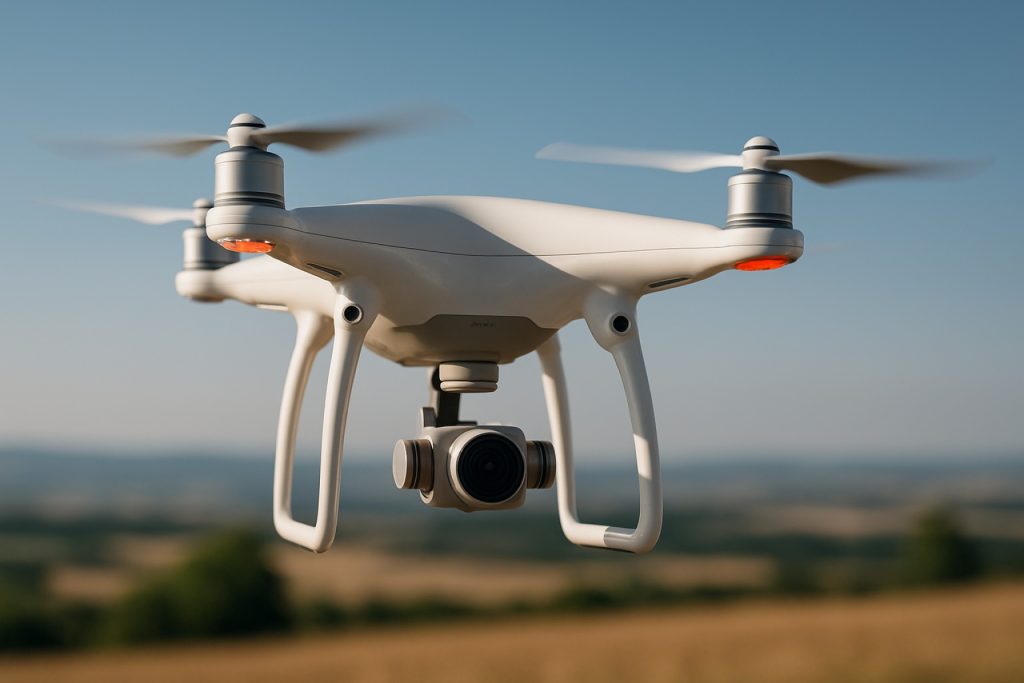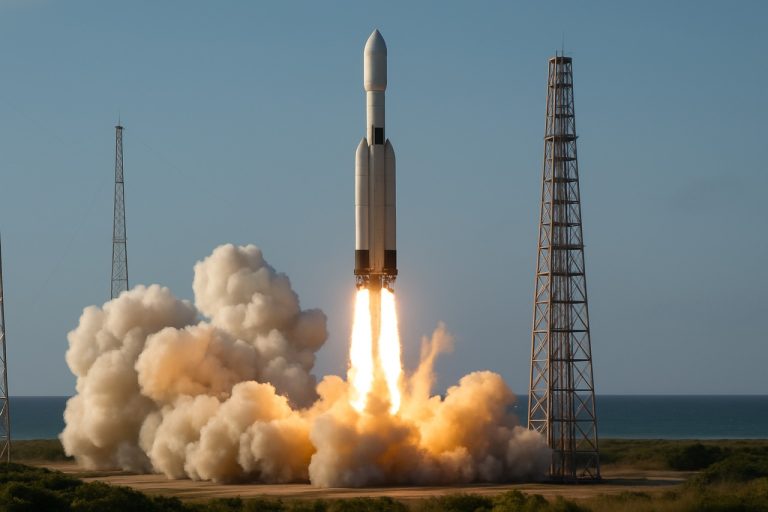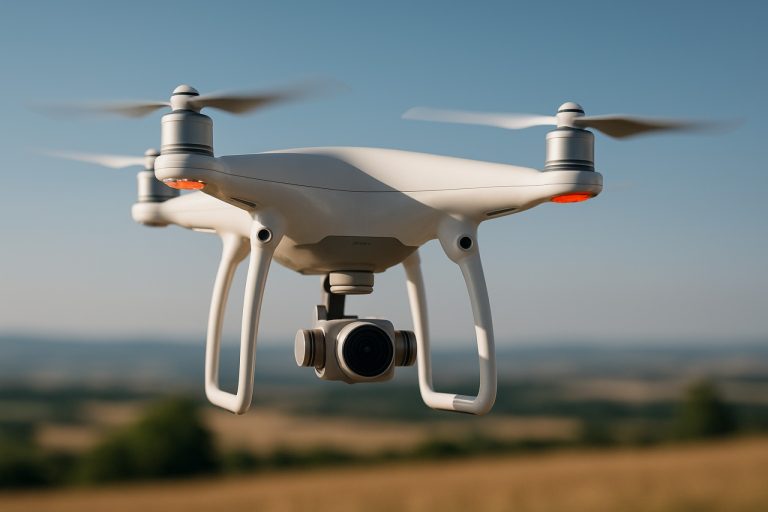
Comprehensive Analysis of Global Drone Market Dynamics and Future Prospects
- Market Overview and Key Drivers
- Innovative Technology Trends Shaping the Drone Sector
- Competitive Landscape and Leading Players
- Growth Forecasts and Market Projections
- Regional Analysis and Market Penetration
- Future Outlook and Strategic Recommendations
- Challenges and Opportunities in the Evolving Drone Market
- Sources & References
“The global drone market has grown rapidly in recent years and is poised for continued expansion through 2030.” (source)
Market Overview and Key Drivers
The global drone market is poised for robust growth between 2025 and 2030, driven by technological advancements, expanding commercial applications, and supportive regulatory frameworks. According to recent projections, the global drone market size is expected to reach $54.6 billion by 2030, growing at a compound annual growth rate (CAGR) of approximately 13.9% from 2025 (Grand View Research).
- Commercial and Industrial Adoption: The commercial sector is anticipated to dominate market share, with industries such as agriculture, construction, logistics, and energy increasingly leveraging drones for tasks like crop monitoring, site surveying, and infrastructure inspection. The integration of drones in last-mile delivery is also gaining traction, with major logistics players piloting drone-based delivery solutions (Mordor Intelligence).
- Technological Innovations: Advances in artificial intelligence, machine learning, and sensor technology are enhancing drone capabilities, enabling real-time data analytics, autonomous navigation, and improved safety features. The proliferation of 5G networks is further facilitating seamless communication and control of drones, especially in urban environments (MarketsandMarkets).
- Regulatory Developments: Governments worldwide are updating regulations to accommodate the growing use of drones, particularly for beyond visual line of sight (BVLOS) operations and urban air mobility. The U.S. Federal Aviation Administration (FAA) and the European Union Aviation Safety Agency (EASA) are leading efforts to streamline certification and operational guidelines, which is expected to accelerate market adoption (FAA).
- Defense and Security Applications: The defense sector remains a significant contributor, with increased investments in unmanned aerial vehicles (UAVs) for surveillance, reconnaissance, and tactical missions. Geopolitical tensions and the need for advanced border security are fueling demand for military-grade drones (Global Industry Analysts).
Overall, the global drone market outlook for 2025–2030 is characterized by rapid innovation, expanding use cases, and a favorable regulatory environment, positioning drones as a transformative technology across multiple sectors.
Innovative Technology Trends Shaping the Drone Sector
The global drone market is poised for significant expansion between 2025 and 2030, driven by rapid technological advancements, regulatory evolution, and expanding commercial applications. According to recent projections, the global drone market size is expected to reach $54.6 billion by 2030, growing at a compound annual growth rate (CAGR) of 13.9% from 2023 to 2030 (Grand View Research).
- Commercial and Industrial Adoption: The commercial sector is anticipated to dominate market share, with industries such as agriculture, construction, logistics, and energy increasingly integrating drones for tasks like crop monitoring, site surveying, and infrastructure inspection. The delivery drone segment, in particular, is forecasted to witness a CAGR of over 20% through 2030, fueled by e-commerce and last-mile delivery innovations (MarketsandMarkets).
- Technological Innovations: Key trends shaping the market include the adoption of artificial intelligence (AI) for autonomous navigation, real-time data analytics, and enhanced obstacle avoidance. The integration of 5G connectivity is expected to enable faster data transmission and remote operations, while advancements in battery technology are extending drone flight times and payload capacities (IDTechEx).
- Regulatory Developments: Governments worldwide are updating drone regulations to accommodate commercial growth while ensuring safety and privacy. The implementation of Unmanned Traffic Management (UTM) systems and remote identification requirements is expected to streamline airspace integration and foster market expansion (FAA).
- Regional Outlook: North America and Asia-Pacific are projected to lead market growth, with China, the United States, and India investing heavily in drone technology for both civilian and defense applications. Europe is also advancing, particularly in regulatory harmonization and urban air mobility initiatives (GlobeNewswire).
In summary, the 2025–2030 outlook for the global drone market is marked by robust growth, underpinned by technological breakthroughs, expanding use cases, and supportive regulatory frameworks. Stakeholders across industries are expected to benefit from increased efficiency, cost savings, and new business models enabled by next-generation drone technologies.
Competitive Landscape and Leading Players
The global drone market is poised for robust growth between 2025 and 2030, driven by expanding applications across commercial, defense, and consumer sectors. According to recent projections, the market is expected to reach USD 129.2 billion by 2030, growing at a CAGR of 13.9% from 2023 to 2030. This surge is fueled by advancements in drone technology, regulatory support, and increased adoption in industries such as agriculture, logistics, surveillance, and infrastructure inspection.
Competitive Landscape
- Highly Fragmented Market: The drone industry features a mix of established aerospace giants and innovative startups. The competitive landscape is characterized by rapid technological innovation, strategic partnerships, and frequent mergers and acquisitions.
- Regional Dynamics: North America currently leads the market, accounting for over 35% of global revenue in 2023, thanks to strong defense spending and a mature commercial drone ecosystem. However, Asia-Pacific is projected to witness the fastest growth, propelled by government initiatives and expanding industrial applications in China, India, and Japan (MarketsandMarkets).
Leading Players
- DJI (SZ DJI Technology Co., Ltd.): Headquartered in China, DJI dominates the global commercial and consumer drone segments, with an estimated 70% market share in 2023. Its product portfolio includes the Mavic, Phantom, and Matrice series, widely used for aerial photography, mapping, and industrial inspections.
- Parrot SA: Based in France, Parrot is a key player in both consumer and enterprise drones, focusing on security, agriculture, and mapping solutions.
- AeroVironment Inc.: A leading U.S. defense contractor, AeroVironment specializes in small unmanned aerial systems (UAS) for military and government applications.
- Skydio: An American startup gaining traction with its AI-powered autonomous drones, Skydio is increasingly used in public safety, infrastructure inspection, and defense.
- Other Notables: Companies such as Lockheed Martin, Northrop Grumman, and Boeing are prominent in the military drone segment, while startups like Zipline and Wing (Alphabet) are innovating in drone delivery and logistics.
As regulatory frameworks mature and new use cases emerge, competition is expected to intensify, with leading players investing heavily in R&D, AI integration, and global expansion to capture market share in the evolving drone ecosystem.
Growth Forecasts and Market Projections
The global drone market is poised for robust expansion between 2025 and 2030, driven by technological advancements, regulatory support, and expanding commercial applications. According to recent projections, the market size is expected to reach $54.6 billion by 2030, growing at a compound annual growth rate (CAGR) of approximately 13.9% from 2025 (Grand View Research).
Key factors fueling this growth include:
- Commercial Adoption: Sectors such as agriculture, construction, logistics, and energy are increasingly integrating drones for tasks like surveying, crop monitoring, and infrastructure inspection. The commercial drone segment is projected to account for over 60% of the total market by 2030 (MarketsandMarkets).
- Regulatory Developments: Evolving regulations in major markets, including the U.S., EU, and China, are streamlining drone operations and enabling beyond visual line of sight (BVLOS) flights, which are critical for scaling delivery and inspection services (FAA).
- Technological Innovations: Advances in AI, battery technology, and sensor integration are enhancing drone capabilities, range, and safety, making them more attractive for enterprise and government use (IDTechEx).
Regionally, North America is expected to maintain its lead due to early adoption and strong regulatory frameworks, while Asia-Pacific is forecasted to witness the fastest growth, propelled by investments in smart agriculture and urban air mobility initiatives (Fortune Business Insights).
By application, the delivery and logistics segment is anticipated to see the highest CAGR, as e-commerce giants and logistics providers pilot last-mile drone delivery solutions. Meanwhile, the defense and security sector will continue to represent a significant share, with governments investing in surveillance and reconnaissance capabilities.
In summary, the 2025–2030 outlook for the global drone market is highly optimistic, with sustained double-digit growth expected across commercial, industrial, and defense applications, underpinned by regulatory clarity and rapid technological progress.
Regional Analysis and Market Penetration
The global drone market is poised for robust growth between 2025 and 2030, driven by expanding applications across commercial, defense, and consumer sectors. According to recent projections, the market is expected to reach $54.6 billion by 2030, growing at a compound annual growth rate (CAGR) of 13.9% from 2025 (MarketsandMarkets).
- North America: The region remains the largest market, accounting for over 35% of global drone revenues in 2024. The United States leads due to strong defense spending, rapid adoption in agriculture, infrastructure, and logistics, and a supportive regulatory environment. The Federal Aviation Administration (FAA) forecasts over 2.3 million commercial drones in operation by 2030 (FAA).
- Europe: Europe is projected to see a CAGR of 14.5% through 2030, with Germany, France, and the UK at the forefront. The European Union’s U-space initiative and harmonized regulations are accelerating commercial drone integration, especially in delivery, surveillance, and environmental monitoring (EASA).
- Asia-Pacific: This region is the fastest-growing, expected to surpass North America by 2030. China dominates manufacturing and deployment, with significant investments in urban air mobility and agricultural drones. India and Japan are also expanding rapidly, supported by government initiatives and increasing demand in construction and disaster management (Grand View Research).
- Middle East & Africa: Market penetration is accelerating, particularly in oil & gas, security, and infrastructure inspection. The UAE and Saudi Arabia are leading with smart city projects and regulatory reforms to attract drone technology investments (Mordor Intelligence).
- Latin America: Adoption is growing, especially in agriculture and mining. Brazil and Mexico are key markets, leveraging drones for crop monitoring and resource exploration (Research and Markets).
Overall, the global drone market’s outlook from 2025 to 2030 is characterized by technological innovation, regulatory evolution, and expanding use cases, with regional dynamics shaping adoption rates and market penetration.
Future Outlook and Strategic Recommendations
The global drone market is poised for robust growth between 2025 and 2030, driven by technological advancements, expanding commercial applications, and supportive regulatory frameworks. According to Grand View Research, the global drone market size was valued at USD 30.6 billion in 2022 and is projected to reach over USD 90 billion by 2030, registering a compound annual growth rate (CAGR) of approximately 14% during the forecast period.
Key growth drivers include:
- Commercial Adoption: Sectors such as agriculture, construction, logistics, and energy are increasingly integrating drones for tasks like crop monitoring, site surveying, and infrastructure inspection. The commercial drone segment is expected to outpace military and consumer segments, with logistics and delivery applications gaining particular momentum.
- Technological Innovation: Advances in AI, machine learning, and sensor technology are enhancing drone autonomy, safety, and data analytics capabilities. The integration of 5G networks is expected to further enable real-time data transmission and remote operations.
- Regulatory Evolution: Governments worldwide are updating regulations to accommodate beyond-visual-line-of-sight (BVLOS) operations and urban air mobility, fostering a more favorable environment for commercial drone deployment (FAA).
However, the market faces challenges such as airspace management, privacy concerns, and cybersecurity risks. Addressing these will be crucial for sustained growth.
Strategic Recommendations:
- Invest in R&D: Companies should prioritize research in AI-driven navigation, battery technology, and payload optimization to maintain competitive advantage.
- Expand Partnerships: Collaborations with regulatory bodies, technology providers, and end-user industries can accelerate market entry and innovation.
- Focus on Emerging Markets: Asia-Pacific and Latin America are expected to witness the fastest growth due to increasing industrialization and supportive government initiatives (MarketsandMarkets).
- Enhance Compliance and Security: Proactive measures to address regulatory compliance and cybersecurity will be essential to build trust and ensure operational continuity.
In summary, the global drone market is set for significant expansion through 2030, with innovation, regulatory adaptation, and strategic collaboration serving as key enablers for industry stakeholders.
Challenges and Opportunities in the Evolving Drone Market
The global drone market is poised for significant transformation between 2025 and 2030, driven by rapid technological advancements, regulatory evolution, and expanding commercial applications. According to recent projections, the global drone market is expected to reach USD 54.6 billion by 2030, growing at a compound annual growth rate (CAGR) of 13.9% from 2023 to 2030. This growth is underpinned by increasing adoption across sectors such as agriculture, logistics, infrastructure inspection, and public safety.
- Technological Advancements: Innovations in artificial intelligence, battery technology, and sensor integration are enhancing drone capabilities. Autonomous flight, real-time data analytics, and improved payload capacities are enabling new use cases and improving operational efficiency.
- Regulatory Landscape: Regulatory frameworks are evolving to accommodate the proliferation of drones. The introduction of Remote ID requirements by the FAA and similar initiatives in the EU are aimed at ensuring airspace safety and accountability, but they also present compliance challenges for manufacturers and operators.
- Commercial Expansion: The commercial sector is expected to dominate the market, with applications in delivery services, precision agriculture, and infrastructure monitoring. For instance, the use of drones in agriculture is projected to grow at a CAGR of 15.2% through 2030 (MarketsandMarkets).
- Geographical Trends: North America and Asia-Pacific are leading regions, with China and the United States accounting for a significant share of both manufacturing and deployment. Emerging markets in Latin America and Africa are also witnessing increased adoption, particularly in agriculture and resource management.
Despite these opportunities, the market faces challenges such as airspace integration, privacy concerns, and cybersecurity risks. Addressing these issues will require collaboration between industry stakeholders and regulators. Nevertheless, the outlook for 2025–2030 remains robust, with drones set to play a pivotal role in reshaping industries and enabling new business models worldwide (Statista).
Sources & References
- Global Drone Market Outlook (2025–2030)
- USD 54.6 billion by 2030
- Mordor Intelligence
- MarketsandMarkets
- IDTechEx
- GlobeNewswire
- 70% market share
- Lockheed Martin
- Northrop Grumman
- Boeing
- Zipline
- Wing
- commercial drone segment
- EASA
- Research and Markets
- Statista



